 A point moves so that the sum of the squares of its distances from two fixed points is constant. Prove that the locus is a circle. A point moves so that the sum of the squares of its distances from two fixed points is constant. Prove that the locus is a circle.  Analytic Geometry - Page 36by Edwin Schofield Crawley, Henry Brown Evans - 1918 - 239 pagesFull view Analytic Geometry - Page 36by Edwin Schofield Crawley, Henry Brown Evans - 1918 - 239 pagesFull view - About this book
 | W. P. Turnbull - Geometry, Analytic - 1867 - 276 pages
...angles of a triangle to the middle points of the opposite sides meet in a point. 31. A point moves so that the sum of the squares of its distances from two points x^y^ x 2 y 2 is equal to the sum of the squares of its distances from two other points # 3 y... | |
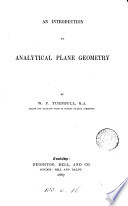 | William Peveril Turnbull - Geometry, Analytic - 1867 - 298 pages
...angles of a triangle to the middle points of the opposite sides meet in a point. 31. A point moves so that the sum of the squares of its distances from two points xjj^ x^ is equal to the sum of the squares of its distances from two other points a^, xtyt.... | |
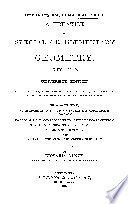 | Edward Olney - Geometry - 1872 - 96 pages
...other at right angles, so as to inclose a rectangle. 870. Prob. — Find the locus of a point such that the sum of the squares of its distances from two fixed points shall be equivalent to the square of the distance between the fixed points. OF LOCI. drawn through... | |
 | Edward Olney - Geometry - 1872 - 562 pages
...other at right angles, so as to inclose a rectangle. 870. Prob. — Find the locus of a point such that the sum of the squares of its distances from two fixed points shall be equivalent to the square of the distance between the fixed points. OF LOCI. drawn through... | |
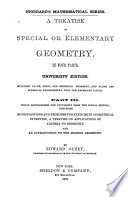 | Edward Olney - Geometry - 1872 - 102 pages
...each other at right angles, so as to inclose a rectangle. 870. Prob.—Find the locus of a point such that the sum of the squares of its distances from two fixed points shall be equivalent to the square of the distance between the fixed points. drawn through the extremities... | |
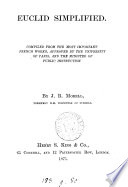 | John Reynell Morell - 1875 - 220 pages
...of the circumference and of the secants is constant. 108. The geometrical locus of the point, such that the sum of the squares of its distances from two fixed points is constant, is a circumference of which the centre coincides with the middle of the straight line... | |
 | James Maurice Wilson - 1878 - 450 pages
...and one of the angles at the base, construct the triangle. 5. Find the locus of 'a point which moves so that the sum of the squares of its distances from two given points is constant. We subjoin a few problems and theorems as miscellaneous exercises in the... | |
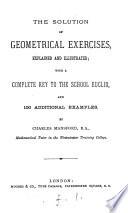 | Charles Mansford - 1879 - 112 pages
...distances from two fixed lines is a constant given length. (34.) 187. To find the locus of a point, such that the sum of the squares of its distances from two fixed points is constant, (ii. 13.) 188. To draw a line through a given point between the legs of an angle, so that... | |
 | Charles Smith - Conic sections - 1883 - 388 pages
...in the point Y; show that CY is parallel to A'P^ C being the centre of the CMirve. 3. A point moves so that the sum of the squares of its distances from two intersecting straight lines is constant. Prove that its locus is an ellipse, and find the eccentricity... | |
 | Charles Smith - Geometry, Analytic - 1884 - 256 pages
...planes of three conicoids meet in a point, the other four will also meet in a point. 13. A plane moves so that the sum of the squares of its distances from two of the angles of a tetrahedron is equal to the sum of the squares of its distances from the other two... | |
| |